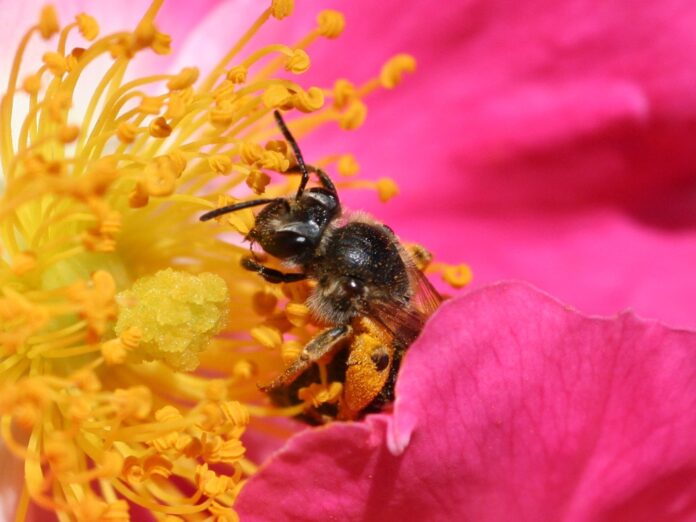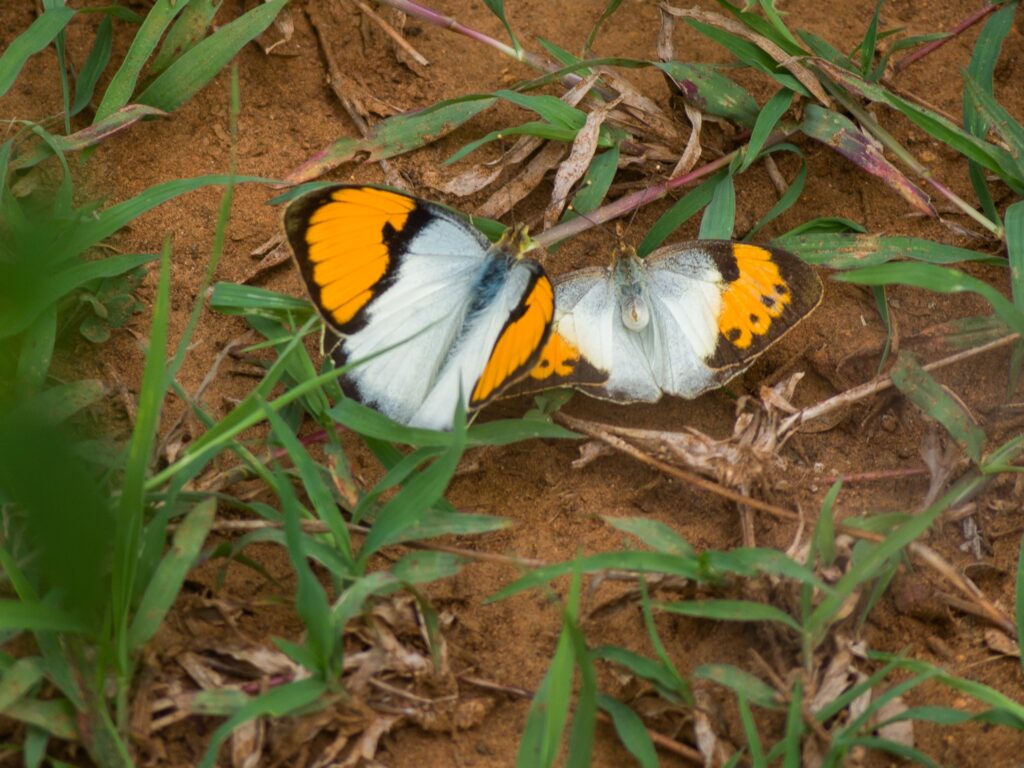There is a saying that you should think globally and act locally. Pollinators are vital for the production of all plant-based food we eat and an estimated third of all crops need pollinators. The problem is that pollinators such as native bees and honeybees are in trouble. Their populations are in a sharp decline because of disease, pesticide use, and parasites as well as a loss of nesting habitat and food.
Pollinators need food, water, shelter, a healthy environment and a safe place to live and raise their young. If you want to help these vital insects, there are a few ways that you can help them in your garden, schoolyard and community garden.
Plant a pollinator-friendly garden:
You should plant flowering plants that provide blooms from spring until fall. This will provide these insects with the nectar and pollen they need for the season. Early in the season, flowering shrubs and trees will be important food sources. Try planting some of these flowers to attract more pollinators.
When you are planning flowering perennials and annuals, you should plant them together in groups of three instead of dotting them around the garden. This will make it easier for the insects to find the plants.
You should also have native plants in your garden. These are plants that have evolved alongside the native pollinators. This will make them beneficial to insects. The native plants that you choose should be suited to the soil, light, and moisture in your garden. This will not only help the insects, but it will also make caring for your garden easier.
Have plants that feed all stages of the insect life cycle:
You will not be able to get any butterflies if there are no caterpillars. This is why you need to have plants that will feed the young and adult stages of the pollinators’ life. An example of this will be monarch butterflies who feed on a lot of different types of flowers. The problem is that as caterpillars, they will only feed on milkweed plants.
The eastern black swallowtails are the same as the caterpillars only feed on plants in the carrot family. This will include parsley, carrots, Queen Anne’s lace, and dill. Having these plants are important, but you also need to accept that the plants will be chewed on. If you do not want to see the chewed leaves, you should plant them in an inconspicuous spot.
Minimize the use of pesticides:
Pesticides, even those that are approved for organic gardens, can harm pollinators. This is why you should keep their use to the bare minimum. If you have to use one, you should choose one that has the lowest possible risk to bees and other pollinators. The labels of these products will list bee hazard information. You should also spray the pesticide in the evening when the pollinators are no longer flying around.
Provide a source of water:
Placing a shallow basin of water with some stones and piles of gravel on the ground will provide water to these insects. The stones and gravel are important as they provide pollinators with a perch so they can drink. There are some insects such as pollinator bees and butterflies that prefer mud puddles.
To provide this, you need to let a faucet or hose drip to form the mudding sipping spot. You can also add some wood ash and sea salt to the mud to improve the micronutrients on offer.
 Do not tidy too much:
Do not tidy too much:
You should leave some plants and leave litter standing during the winter months. This will provide a spot for the pollinators during the cold months. If possible, you can leave some of the dead wood standing in an out of the way area of the garden. This can be used as a nesting site for native bees.
Build bee housing:
You can easily make some nesting block for the pollinators who nest in wood. You will need a block of untreated wood where you drill at least 10 holes into at a depth of 4 to 8 inches. The wood should then be hung with the holes horizontally around 3 feet off the ground. If possible, the block should face southeast.
Enhance your lawn:
The lawn weeds that you want to get rid of such as dandelions and white clovers are a source of food for pollinators. You should embrace the idea that your lawn is a habitat for these insects and allow more than grass to grow there.
Spread the word:
While one pollinator-friendly garden is good, an entire community of them will be much better. You should share information with people you know and get others to understand the importance of helping pollinators.



 Do not tidy too much:
Do not tidy too much:










![Technical Aspects of 844 Area Code in 2024 [Detail Guide] 844 Area Code](https://articleify.com/wp-content/uploads/2024/01/844-Area-Code-150x150.jpg)














